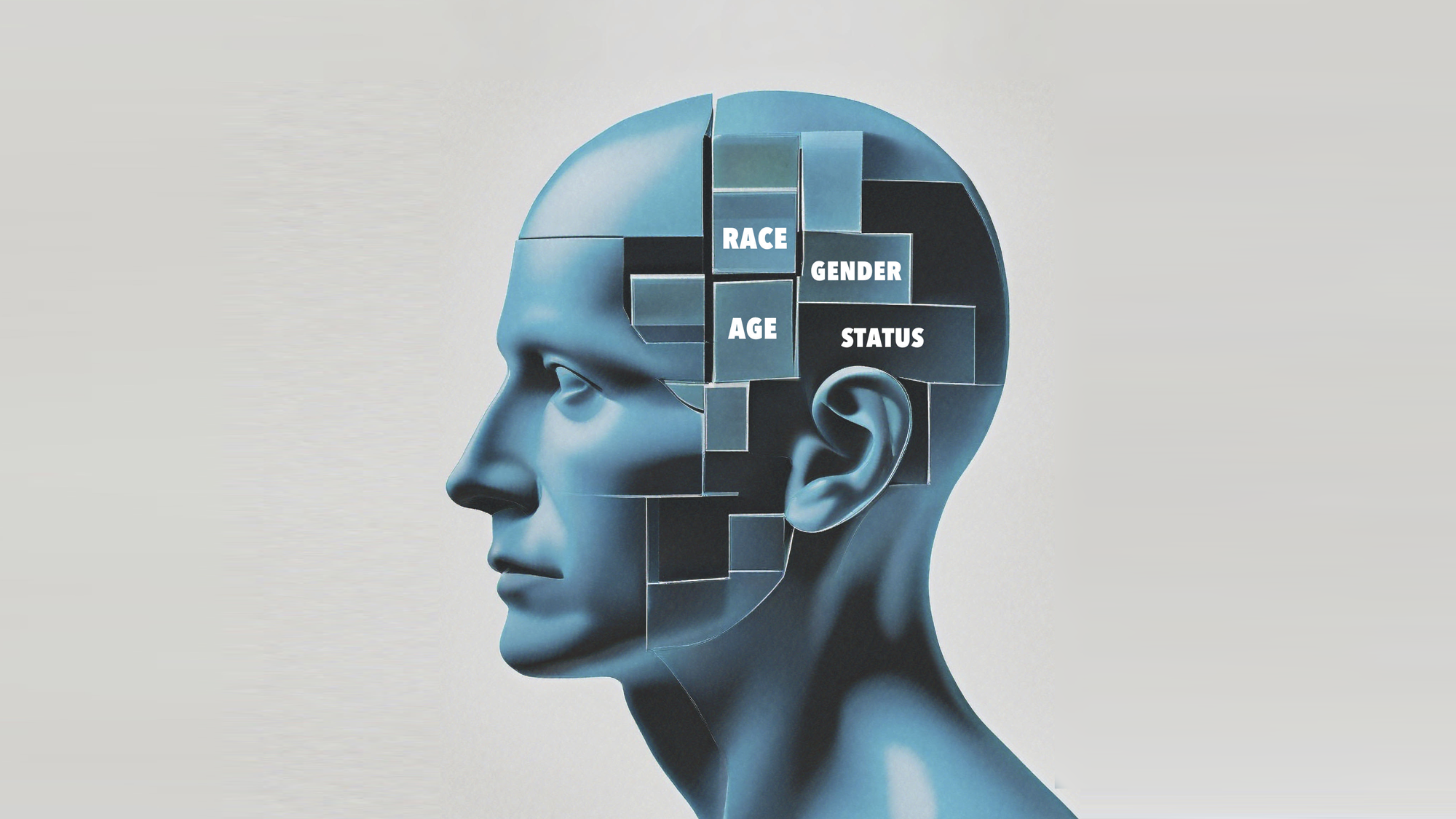Recognizing and addressing our biases can help ensure equitable care for all patients.
- Raising awareness of implicit biases is necessary for changing individual-level beliefs and actions.
- Having biases doesn’t make one a bad person. However, they become problematic when we treat others unfavorably based on those biases.
- Addressing implicit bias among healthcare providers is vital to improving patient safety, health outcomes, and access to care.
Implicit bias, unconscious attitudes and stereotypes that influence our thoughts, actions, and decisions, frequently contradict our conscious beliefs. It’s a universal phenomenon that affects everyone, regardless of moral character.
Delivering health equity at the bedside
Strategies to combat implicit bias in nursing
Addressing implicit bias in nursing: What color is your lens?
Implicit biases develop through our experiences, cultural backgrounds, and media exposure, and they can intensify during times of stress or intense emotion. They occur when our brains try to take shortcuts for faster decision-making and more efficient information processing. However, these flawed mental shortcuts influence our understanding, actions, and decisions, which can lead to unfair treatment and negative outcomes for certain groups.
Recognizing the existence of bias and understanding how it works can help improve interactions with others and reduce its negative impact, particularly in healthcare. Nurses must acknowledge the prevalence of bias and its effects on patients, as well as adopt strategies to mitigate its impact. These efforts promote health equity and reduce disparities.
Bias in healthcare
Implicit bias can lead to unfair treatment, discrimination, and disparities in healthcare outcomes. Biases can influence decisions in admissions, diagnoses, pain management, and interventions, resulting in unequal treatment. Stereotyping and prejudice caused by implicit bias frequently strain social relationships by creating barriers, perpetuating misunderstandings, and undermining trust among individuals or groups.
In addition, implicit bias contributes to social inequities and systemic discrimination. For instance, biases in hiring practices can limit diversity in nursing, perpetuating unequal opportunities and outcomes for marginalized communities. A diverse nursing workforce can enhance patient advocacy, improve outcomes, and promote health equity for underrepresented populations.
Health inequities, which have grown over time, remain unnecessary, unjust, and avoidable. In the past, the blame for poor health outcomes frequently was placed on the patients themselves, citing their lack of accountability in managing their health. For example, studies indicate that individuals without health insurance are less likely to seek preventive care and treatment for chronic or major health conditions. However, as healthcare outcomes continued to deteriorate, attention shifted toward the healthcare system and its role in promoting health, addressing illness, and delivering equitable care. After decades of declining health outcomes, the literature now suggests that healthcare provider bias is a contributing factor in unequal treatment among minorities.
The American Academy of Medicine’s Future of Nursing 2020–2030: Charting a Path to Achieve Health Equity acknowledges health disparities among marginalized communities and highlights the crucial role of nurses in addressing these disparities and promoting health equity. The report offers a comprehensive plan for transforming nursing practice, education, and policy to improve health outcomes for all individuals, regardless of socioeconomic status, geographic location, or race. The aim is to create a future where everyone has equal access to quality healthcare and experiences improved health and well-being.
Impact on patient outcomes
In healthcare settings, implicit bias can lead to differential treatment based on various attributes such as race, gender, age, and socioeconomic status. It can impact patient outcomes by influencing clinical decision-making. Healthcare providers may unknowingly make assumptions about a patient’s health status, lifestyle choices, or adherence to treatment based on their race or ethnicity. For example, a provider may assume a patient from a particular racial or ethnic group is less likely to engage in healthy behaviors or follow medical advice. Biases can result in misdiagnosis or delayed diagnosis, inappropriate treatment plans, or inadequate care, which ultimately leads to worsened health outcomes for these populations.
Implicit bias also affects the communication between healthcare providers and patients. Biased attitudes and stereotypes can create misunderstandings, mistrust, and a breakdown in the patient–provider relationship. Patients from marginalized groups may feel unheard, disrespected, or discriminated against, which may lead to reluctance in seeking care or following through with recommended treatments. Breakdown in communication can hinder the delivery of quality healthcare and further exacerbate health disparities.
In addition, implicit bias intersects with social and structural determinants of health to create a detrimental impact on marginalized patients’ health outcomes. Factors such as socioeconomic status, education level, discrimination, employment conditions, neighborhood environment, healthcare access/quality, and policy/governance play a significant role in shaping health disparities. When combined with implicit bias, these determinants contribute to inequities in healthcare and health outcomes for marginalized populations.
Delayed diagnosis and treatment resulting from implicit bias can lead to the progression of underlying conditions, worsened symptoms, and potential complications. Marginalized individuals already face barriers to healthcare access, and the presence of implicit bias exacerbates these challenges. Consequently, they experience poorer health outcomes compared to their non-marginalized counterparts. This issue is particularly notable in chronic health conditions such as cardiovascular disease, diabetes, and hypertension, where documented disparities in access and quality of care persist. Implicit bias perpetuates these disparities, making it more difficult for marginalized individuals to receive equitable care and achieve optimal health outcomes.
The National Healthcare Quality and Disparities report from the Agency for Healthcare Research and Quality highlights the United States’ high maternal mortality rate compared to other industrialized countries, with a disproportionate impact on Black individuals. The Kaiser Family Foundation reports that members of racial and ethnic minorities receive fewer preventive healthcare services, such as vaccinations and cancer screenings, compared to White individuals. Additionally, the National Cancer Institute finds that Black people experience higher death rates and shorter survival periods for most cancers compared to other racial and ethnic groups. The American Diabetes Association notes that Hispanic, Black, and American Indian/Alaskan Native populations have significantly higher rates of diabetes compared to non-Hispanic Whites. These disparities underscore the need for targeted interventions and efforts to address the unequal healthcare experiences and outcomes among various racial and ethnic groups. (See Implications for patients.)
Implications for patients
According to Vela and colleagues, ramifications of implicit bias in healthcare include the following:
- Disparities in clinical decision-making and treatment recommendations
- Incorrect assumptions about minority patients’ socioeconomic status, education level, and behaviors without proper assessment
- Poorer patient–provider communication
- Lower patient satisfaction and trust
- Reduced patient adherence to treatment
- Perpetuation of health disparities
Case examples
The following nursing scenarios demonstrate how bias infiltrates the healthcare system, impacting patient care and outcomes. They highlight instances where bias manifests, shedding light on the significance of recognizing and addressing bias to promote equitable and patient-centered care for all individuals.
Inadequate communication
Gloria Lopez*, a 45-year-old Hispanic woman, is admitted to a medical-surgical unit to manage diabetes complications. She speaks English fluently but has a noticeable accent. Ms. Lopez’s daughter serves as her interpreter when needed. The nurse assigned to Ms. Lopez assumes Latino patients have lower health literacy or may struggle with understanding medical instructions. As a result of these assumptions, the nurse fails to provide thorough explanations about the treatment plan and medications. She also overlooks the need for cultural sensitivity, disregarding Ms. Lopez’s unique needs and preferences such as her desire to have family members present during medical discussions, requests for meals that align with her cultural dietary habits, a preference for traditional herbal remedies alongside conventional treatments, and her wish to incorporate prayer and spiritual practices into her care routine.
As the days pass, Ms. Lopez becomes increasingly frustrated and confused about her treatment. She notices that the instructions on the medication labels differ from what the nurse explained, which leaves her uncertain about the proper dosage and timing. When Ms. Lopez asks for clarification, the nurse responds impatiently, assuming the patient doesn’t understand the information provided. Ms. Lopez’s daughter, recognizing the biased treatment, attempts to advocate for her mother’s needs and asks the nurse to provide clearer explanations in Spanish. The nurse dismisses the daughter’s request, asserting that hospital policy requires communication in English.
As a result of the biased care, Gloria experiences medication errors and struggles to manage her diabetes effectively. Her blood sugar levels become unstable, causing her condition to worsen. Proper education, clear communication, and culturally sensitive care could have prevented this deterioration.
Dismissed symptoms
Deanna Walker, a postpartum Black woman with a history of blood clots, experiences excruciating pain and numbness in her legs after a Cesarean delivery. The nurse dismisses Ms. Walker’s concerns as exaggerated and assumes she’s being overly anxious. Over time, the patient’s symptoms worsen and she becomes increasingly anxious, notifying the nurse multiple times about her worries and symptoms, including severe coughing. The nurse continues to dismiss Ms. Walker’s concerns as normal postpartum discomfort and fails to conduct a thorough assessment or consult with the healthcare provider.
Eventually, Ms. Walker experiences severe chest pain and difficulty breathing, which requires urgent intervention. Assessment and testing reveal a life-threatening pulmonary embolism due to a blood clot. The nurse’s biased assumptions and delayed recognition put the patient’s life at risk.
According to the Centers for Disease Control and Prevention, American Indian/Alaska Native and Black women are two to three times more likely to die from pregnancy-related complications than White women. To address implicit bias and improve outcomes, nurses must approach each patient encounter with an open mind, free from assumptions and biases.
This scenario highlights the need for healthcare providers to listen attentively, take patient concerns seriously, and conduct appropriate assessments, especially when caring for patients with specific risk factors or medical histories. Nurses must recognize and challenge their biases to ensure equitable and quality care for all patients.
Delayed care
John Jones, a middle-aged Black man, seeks care in the emergency department (ED) for severe abdominal pain. The triage nurse quickly assesses his vital signs and symptoms and fails to thoroughly evaluate his pain level or inquire about his medical history. The nurse assumes that Mr. Jones’ pain is exaggerated or related to a non-emergency condition; she labels him as “drug-seeking” and assigns him a low-priority status. Despite the patient’s attempts to advocate for himself and express the severity of his pain, the nurses dismiss his concerns. As a result of the long wait time and prioritization of less urgent cases, Mr. Jones’ condition deteriorates.
When the patient is assigned to a nurse, he receives minimal empathy and rushed care because the new nurse relies solely on information provided by the triage nurse. This lack of attention and empathy intensifies Mr. Jones’ anxiety and erodes his trust in the healthcare system. Eventually, he undergoes emergency surgery for a ruptured appendix, which could have been prevented if his symptoms had been taken seriously from the beginning. The biased care provided by both nurses led to a delay in diagnosis and treatment, resulting in avoidable complications for the patient.
The manifestation of bias against Mr. Jones in this scenario points to how biases can lead to inadequate care, delayed treatment, and negative health outcomes for marginalized individuals. It underscores the need for ongoing training and education to promote cultural sensitivity, empathy, and unbiased care among healthcare providers.
Dismantling bias
Addressing implicit biases requires acknowledging and confronting them. This task can prove difficult, especially when we’re unaware of our own biases. We must recognize the hidden influences shaping our interactions and clinical decisions, and actively work to challenge and dispel preconceived notions and beliefs. Eliminating bias involves ongoing self-reflection and taking small, deliberate steps toward change. Transforming our thinking takes time and effort; we must retrain our thoughts and behaviors (learn, unlearn, relearn) to create a more equitable and unbiased healthcare environment.
Learn by educating yourself
To prevent harm caused by unconscious biases, we must engage in self-reflection and examine deeply ingrained attitudes, stereotypes, and judgments that shape our thoughts and decisions. This step can help us identify and address hidden biases that might otherwise be missed. A Buddhist proverb, “Unlearning is the highest form of learning,” emphasizes the importance of challenging and letting go of incorrect information we may not even be aware of. Self-reflection serves as the initial stage in this transformative process of learning and unlearning, enabling us to cultivate awareness and actively work toward dismantling our biases.
Unlearn by exposure
Expanding our exposure to diverse people and groups can foster interactions that allow us to focus on an individual’s unique qualities and find commonalities, rather than solely focusing on physical differences. By immersing ourselves in different cultural, ethnic, and social perspectives, we can mitigate biases. We must remain mindful during these interactions and reflect on any negative emotions—such as hostility, anger, or indifference—by questioning the underlying reasons behind these feelings. Challenging preconceived notions requires us to look at each person as an individual, separate from learned stereotypes associated with race, ethnicity, culture, sexual orientation, gender, and other factors.
Relearn by sharing with others
Addressing biased behaviors requires ongoing effort, dedication, and a commitment to continual improvement, practice, and reflection. This active engagement is crucial for minimizing biases and fostering health equity. We must share the knowledge we’ve gained with others in our social and professional circles, including family, friends, neighbors, and colleagues. When stereotypes arise in conversations, as they frequently do, we must seize the opportunity to impart the new information we’ve learned and challenge these stereotypes. By engaging in open discussions and sharing insights, we can contribute to dismantling biases and promoting a more inclusive and equitable society.
Work together
Nurses comprise the largest workforce in the United States. We must work together to advance health equity and raise awareness about the social and structural factors impacting health outcomes. Through our individual actions and decisions, we’ll collectively enact the systemic change needed to foster environments of inclusivity and fairness.
*Names are fictitious.
Recommended resources
Take advantage of the following resources to better understand implicit bias and how to overcome it to ensure quality care for everyone.
- American Association of Colleges of Nursing. Diversity, Equity, and Inclusion Toolkit.
(aacnnursing.org/diversity-tool-kit) - American Nurses Association. National Commission to Address Racism in Nursing
(nursingworld.org/practice-policy/workforce/racism-in-nursing/national-commission-to-address-racism-in-nursing) - American Nurses Association. Project ECHO on Racism in Nursing
(nursingworld.org/practice-policy/workforce/racism-in-nursing/national-commission-to-address-racism-in-nursing/project-echo) - Kirwin Institute for the Study of Race and Ethnicity. Implicit Bias Module Series
(kirwaninstitute.osu.edu/implicit-bias-module-series) - National League for Nursing. Taking Aim: Addressing Structural Racism, Diversity, Equity, Inclusion, Implicit Bias & Social Justice
(nlntakingaimdei.org) - Project Implicit. The Implicit Association Test
(implicit.harvard.edu/implicit/takeatest.html)
Lois M. Lopez is a senior manager of academic quality at Chamberlain University. American Nurse Journal. 2024; 19(11). Doi: 10.51256/ANJ112424
References
Agency for Healthcare Research and Quality. 2022 National Healthcare Quality and Disparities Report. ahrq.gov/sites/default/files/wysiwyg/research/findings/nhqrdr/2022qdr.pdf
Agrawal S, Enekwechi A. It’s time to address the role of implicit bias within health care delivery. Health Aff. January 15, 2020. doi:10.1377/forefront.20200108.34515
American Diabetes Association. Statistics about diabetes. November 2, 2023. diabetes.org/about-us/statistics/about-diabetes
Centers for Disease Control and Prevention. Preventing pregnancy-related deaths. May 15, 2024. bit.ly/4eiMb9t
Davis S, O’Brien AM. Fast Facts about Diversity, Equity, and Inclusion in Nursing: Building Competencies for an Antiracism Practice. New York City, NY: Springer; 2023.
National Academy of Medicine. The Future of Nursing 2020-2030: Charting a Path to Achieve Health Equity. May 11, 2021. nam.edu/publications/the-future-of-nursing-2020-2030/
National Cancer Institute. Cancer disparities. cancer.gov/about-cancer/understanding/disparities
Ndugga N, Hill L, Artiga S. Key data on health and health care by race and ethnicity. Kaiser Family Foundation. June 11, 2024. kff.org/racial-equity-and-health-policy/report/key-data-on-health-and-health-care-by-race-and-ethnicity/
Vela MB, Erondu AI, Smith NA, Peek ME, Woodruff JN, Chin MH. Eliminating explicit and implicit biases in health care: Evidence and research needs. Annu Rev Public Health. 2022;43:477-501. doi:10.1146/052620-103528
Key words: implicit bias, patient safety, healthcare equity


















